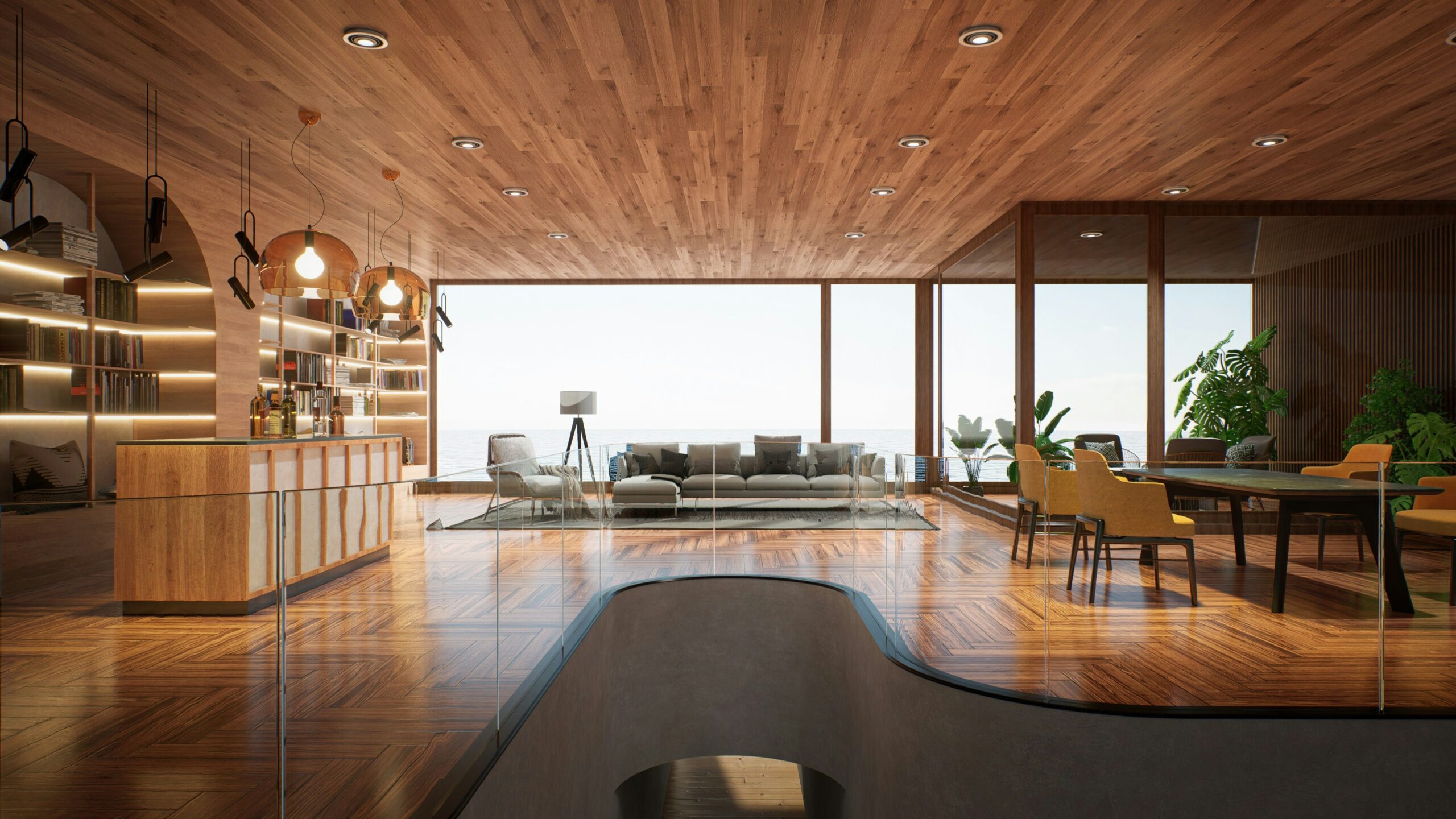As smart homes evolve from futuristic concepts to mainstream realities, the focus is no longer only on automation and connected devices. The architectural and interior design aspects are undergoing a parallel revolution. At the intersection of aesthetics, sustainability, and technology lies one critical but often overlooked component: Acoustic Boards. These innovative materials are not just add-ons but are becoming the foundation for creating intelligent, functional, and comfortable living spaces.
In this article, we will explore why Acoustic Boards are emerging as a core element of smart homes, examine their features, benefits, and applications, and delve into how they represent the future of functional design.
Evolution of Smart Homes: Devices to Materials
The smart home movement began with gadgets, smart thermostats, voice assistants, and automated lighting systems etc. However, as homeowners demand more than just convenience, including wellness, privacy, sustainability, and adaptability, smart homes are evolving holistically.
In this broader vision, materials that regulate acoustics, temperature, light, and even air quality are stepping into the spotlight. This is where Acoustic Boards play a transformative role, offering functional value while aligning with the aesthetics and technical demands of future-ready homes.
What Are Acoustic Boards?
Acoustic Boards are engineered panels designed to absorb sound and reduce noise levels within a space. They are typically made from materials like fiberglass, PET (polyethylene terephthalate), wood wool, foam, or mineral wool, and are strategically placed on walls, ceilings, or floors.
These boards work by disrupting the path of sound waves, converting sound energy into a small amount of heat through friction, thus dampening echoes and reducing reverberation. This creates a quieter, more serene interior environment.
Why Smart Homes Need Acoustic Boards
1. Sound Management for a Multi-Device Ecosystem
Modern homes are packed with devices that talk, literally. From virtual assistants to smart TVs and video conferencing tools, homes are now filled with layers of sound. Without proper acoustic control, this results in noise pollution, reduced speech clarity, and a general sense of chaos.
Acoustic Boards help create defined audio zones and manage sound overlap. For example, a living room fitted with Acoustic Boards can isolate entertainment sounds from adjacent work-from-home or study areas.
2. Privacy in Open-Plan Spaces
Contemporary design favors open layouts, and living, dining, and kitchen areas blend seamlessly. But this comes at the cost of acoustic privacy. Smart materials like Acoustic Boards can compartmentalize noise without building physical walls, enabling a family member to cook while another watches TV or takes a business call.
3. Integration with Smart HVAC and Lighting
Some Acoustic Boards are now integrated with HVAC diffusers and light fixtures, contributing to energy-efficient designs. These multi-functional panels offer both aesthetic and performance value, eliminating the need for bulky ducting or separate soundproofing.
4. Wellness and Mental Health
Smart homes are designed with occupant wellness in mind. Excessive or ambient noise has been linked to stress, poor sleep quality, and reduced cognitive performance. Installing Acoustic Boards can significantly reduce background noise and create a calm sanctuary, essential for relaxation and mental rejuvenation.
Unique Features of Modern Acoustic Boards
While Acoustic Boards have been around for a while in commercial spaces, their use in residential applications has seen a significant innovation curve. Here are some modern features:
-
Sustainable Materials
Eco-conscious brands are producing Acoustic Boards from recycled PET bottles, reclaimed wood, and bio-based fibers. These not only reduce carbon footprint but also appeal to the eco-sensitive homeowner.
-
Custom Shapes and Finishes
Designers can now choose from hexagons, waves, 3D sculptural forms, and custom-printed finishes. These Acoustic Boards serve dual purposes — they enhance sound quality while doubling as wall art or ceiling décor.
-
Fire and Moisture Resistance
Advanced Acoustic Boards come with fire-retardant and moisture-resistant properties, making them suitable even for kitchens and bathrooms. This ensures safety without compromising on acoustic performance.
-
Smart Sensor Integration
The latest generation of Acoustic Boards integrates sensors that can monitor noise levels, occupancy, and even air quality. When connected to a smart home hub, these sensors can trigger adjustments in lighting and HVAC or alert users about noise thresholds being crossed.
Applications of Acoustic Boards in Smart Homes
Here’s how Acoustic Boards are being used across various zones of a smart home:
- Home Theaters: To enhance surround sound effects and eliminate echo.
- Home Offices: To improve speech clarity during virtual meetings and reduce background noise.
- Bedrooms: For better sleep quality by minimizing outdoor and indoor sound intrusions.
- Kids’ Rooms: To create quiet zones for study and play.
- Living Areas: For general noise reduction while maintaining aesthetic appeal.
Installation and Maintenance: Simpler Than You Think
Modern Acoustic Boards are designed for easy installation — many come with adhesive backing, interlocking edges, or simple mounting systems. They can be retrofitted into existing spaces without major renovations.
Maintenance is minimal. Depending on the material, most Acoustic Boards are dust-resistant and can be cleaned with a vacuum, soft brush, or damp cloth.
The Future Outlook: AI-Driven Acoustics
The next frontier in Acoustic Boards is artificial intelligence. Future systems will likely involve real-time acoustic mapping, where AI adjusts audio parameters based on room occupancy, activity, and even the type of conversation happening.
Imagine Acoustic Boards that automatically optimize sound for a movie night, switch to quiet mode during work hours, or alert homeowners to excessive decibel levels, all integrated into a home automation system.
Final Thoughts: Designing for the Future
The rise of smart homes demands that materials catch up with the intelligence of devices. Acoustic Boards represent the future of functional interior design, where wellness, privacy, sustainability, and style intersect seamlessly.
As we move into a new era where homes think, feel, and adapt, choosing the right materials is as important as choosing the right gadgets. Whether you’re designing a new smart home or retrofitting an existing one, consider Acoustic Boards.

